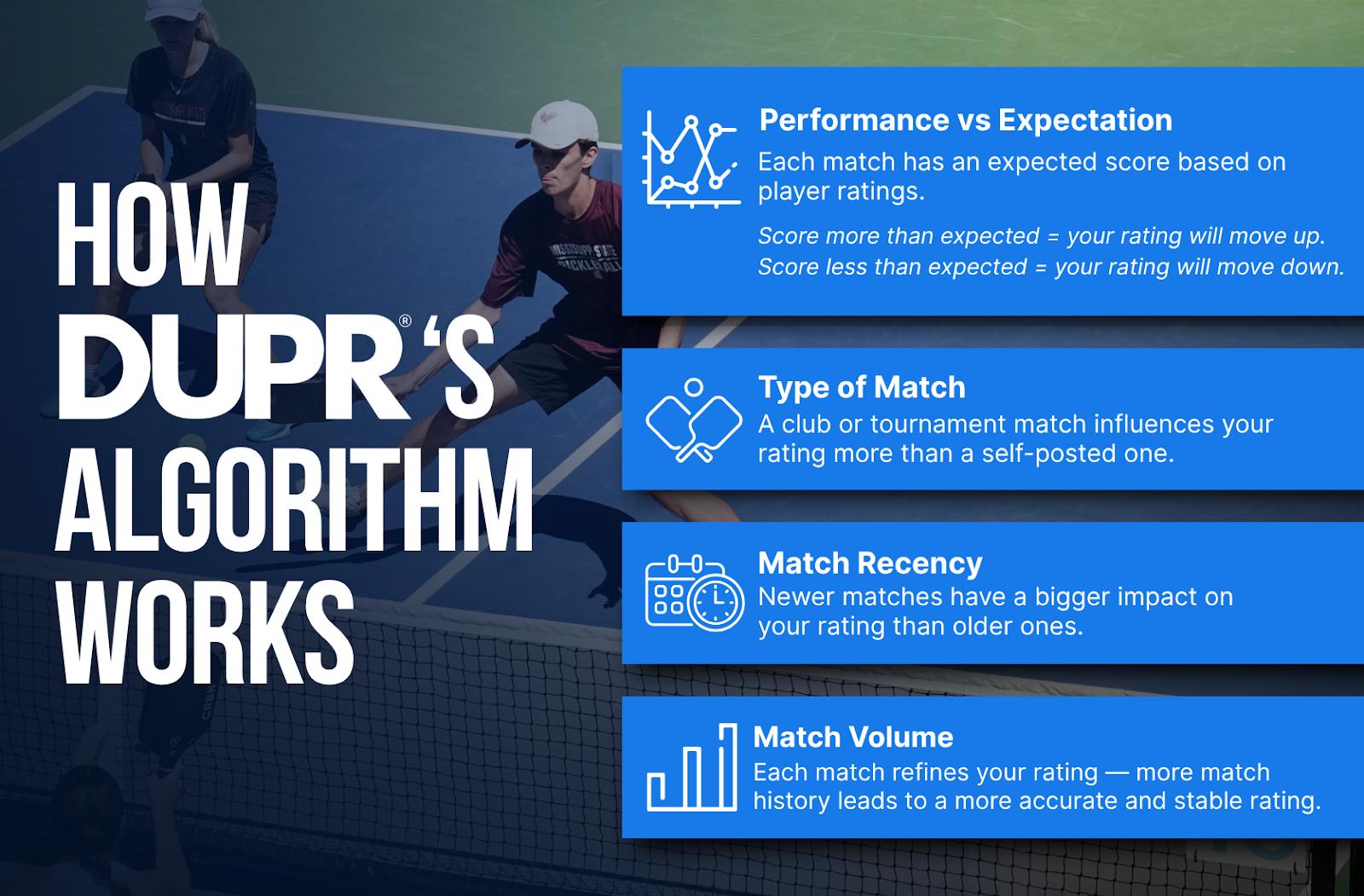
DUPR Algorithm Update: What It Changes for Tournaments
Why the New DUPR Rating Algorithm Matters for Tournament Directors
On Tuesday, DUPR announced a major update to its rating algorithm—and it's a game-changer for tournament directors across the country.
Effective immediately, DUPR ratings will no longer be determined strictly by wins and losses. Instead, player ratings will now reflect actual performance on the court, using a new system based on "performance vs. expectation."
What’s Changed?
The updated algorithm calculates an expected score for each match based on the ratings of the players involved. A player’s DUPR rating is then adjusted based on how their performance compares to that expectation:
-
Outperform expectations? Your rating goes up—even if you lose.
-
Underperform expectations? Your rating goes down—even if you win.
ADVERTISEMENT
This is a shift from the previous model, where the winning team would always see their rating increase, and the losing team would always go down.
Examples That Matter to Your Players
-
Doubles Example:
If a team is expected to win 11–3 but wins 11–8, that’s underperforming. Their rating goes down. The losing team, who exceeded their expected score, sees their rating go up. -
Singles Example:
A 3.5 player is expected to lose to a 4.0 player with a score of 5–11.
But if the match ends 9–11, the 3.5 player has exceeded expectations and their rating will increase.
Why This Matters for Tournament Directors
As a tournament director, you're not just organizing matches—you’re shaping a competitive environment that players trust to reflect their true skill. This new rating system:
-
Improves rating accuracy, especially for players on the rise or those playing in tight matches.
-
Rewards effort and competitiveness, not just outcomes—helping motivate players at all levels.
-
Encourages more competitive matchups, since even close losses can positively impact ratings.
-
Supports seeding and bracket integrity, by providing a clearer reflection of actual skill and performance.
In short: every point now counts more than ever.
This is especially useful in events where high- and low-rated players may compete together (e.g. age/skill brackets or round robins). Players can feel confident knowing that their performance is valued—regardless of the final scoreline.
The Bottom Line for Your Players
DUPR’s update aligns the rating system with how players actually compete. Players who prove they can hang with higher-rated opponents will see their effort rewarded—even in defeat.

As DUPR put it:
"Whether you're the underdog or the favorite, the algorithm rewards players who perform above expectations."
Next Steps
Encourage your players to check out DUPR's Algo Update page for a deeper look at the algorithm changes. And as a tournament director, you can help them better understand how each match—point by point—matters more than ever.
This change reinforces what many in tournament management already believe: good competition deserves to be recognized. With this huge update, the DUPR rating system reflects that accurately more than ever before.
.jpg?width=592&height=237&optimizer=image)





